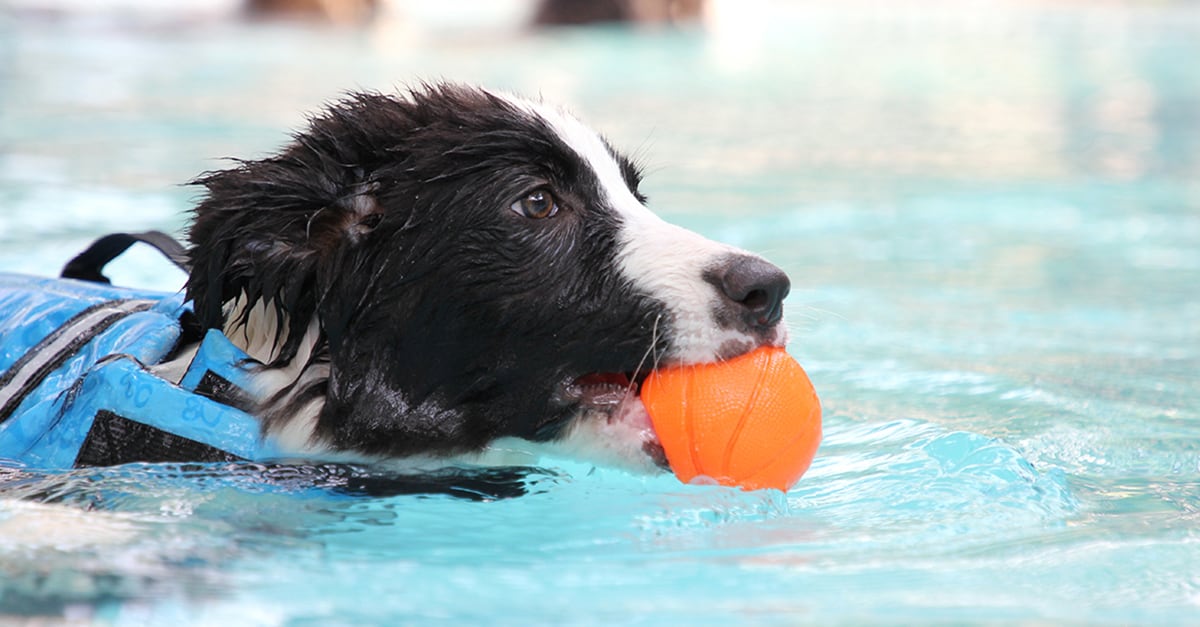A successful rescue of a dog that is drowning (yes, dogs can drown) will bring a flood of relief to their owner. But if a dog has been saved from a nonfatal drowning (or near-drowning), are they out of the woods? Maybe not.
What Is Near-Drowning in Dogs?
Near-drowning is a potentially fatal, but rare, condition that occurs when a dog aspirates (breathes in) water but doesn’t drown. The inhaled water enters the dog’s lungs or irritates their larynx (vocal cords), causing the larynx to spasm and making breathing difficult.
A scary aspect of near-drowning is that symptoms can occur hours and even days after the water inhalation occurred. That is why, if your dog has a near-drowning incident and may have inhaled water, it is important to immediately take them to a veterinarian for a full examination, even if they seem fine.
Dog Near-Drowning Symptoms
Near-drowning signs in dogs are related to a lack of oxygen and respiratory distress. They include:
- Lethargy or fatigue (not wanting to play, move or eat)
- Cough
- Difficulty breathing
- Distress
Near-Drowning Treatment for Dogs
Emergency veterinary care is required, especially if your dog already has breathing problems. If your dog stops breathing before you can make it to the veterinary hospital, perform artificial respiration, or perform CPR if you can’t detect a heartbeat. Once at the veterinary clinic, your veterinarian will perform a full examination and determine the best course of treatment.
How Can Near-Drowning in Dogs Be Prevented?
Some people believe that all dogs can swim, but that’s not the case. You shouldn’t let your dog jump into the pool or other bodies of water if you aren’t sure of their swimming abilities. If they do jump in, be prepared to rescue them. Some other suggestions to help prevent drowning and near-drowning in dogs include:
- Supervise your dog while they are swimming or playing in the water.
- Make sure your dog has a way to leave the water and that they know how to use it.
- Consider fencing off pools or ponds that your dog can access.
- Use a correctly fitted dog life jacket while your dog is on a boat.
Water Intoxication Is Another Concern for Dogs
Another dangerous condition which could develop when a dog is in or around water is water intoxication. According to the American Kennel Club, water intoxication occurs when excessive amounts of water are ingested. This causes low sodium levels outside the body’s cells, and in response, the body increases cell fluid intake. Increased cell volume can be handled by some organs but not by others, particularly the brain. Activities that could be a risk of water intoxication include water-retrieving, swimming, diving and something that you might not have considered as dangerous — biting at the garden hose.
Watch Out for Seawater Ingestion in Dogs
Another hazard is ingesting too much seawater. Ingesting large quantities of saltwater can cause gastrointestinal upset, electrolyte imbalances and potentially be fatal. It’s yet another reason to have your dog examined by a vet immediately after a near-drowning event, even if they seem OK.
Near-drowning is something that pet parents hope they will never have to deal with. If you have a dog who loves water, make sure you take precautions and always supervise them while they’re swimming or playing in the water. If you think your dog may be exhibiting signs of near-drowning or having ingested too much water, it’s important that you seek veterinary attention immediately.







